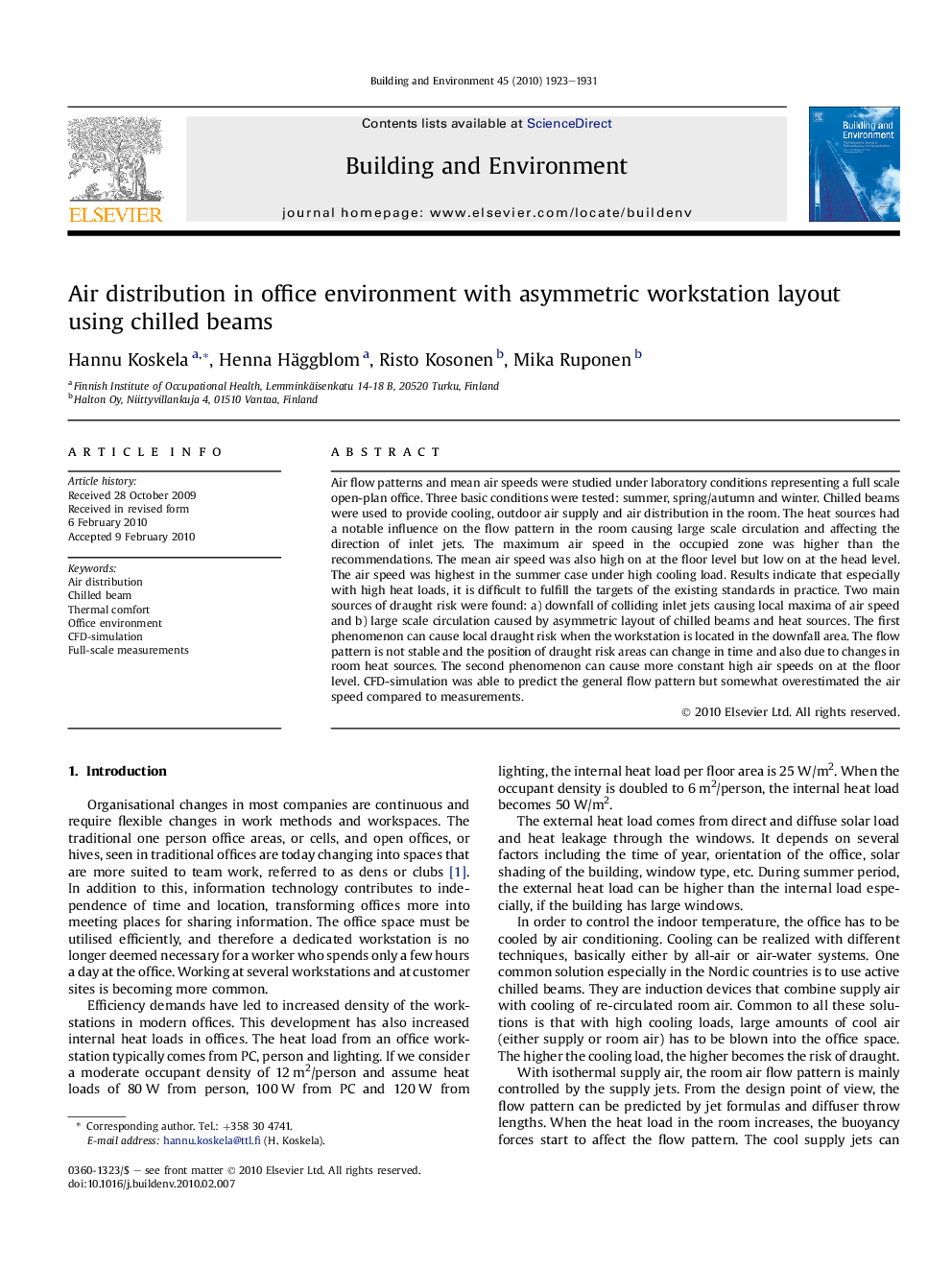| Article ID | Journal | Published Year | Pages | File Type |
|---|---|---|---|---|
| 249364 | Building and Environment | 2010 | 9 Pages |
Air flow patterns and mean air speeds were studied under laboratory conditions representing a full scale open-plan office. Three basic conditions were tested: summer, spring/autumn and winter. Chilled beams were used to provide cooling, outdoor air supply and air distribution in the room. The heat sources had a notable influence on the flow pattern in the room causing large scale circulation and affecting the direction of inlet jets. The maximum air speed in the occupied zone was higher than the recommendations. The mean air speed was also high on at the floor level but low on at the head level. The air speed was highest in the summer case under high cooling load. Results indicate that especially with high heat loads, it is difficult to fulfill the targets of the existing standards in practice. Two main sources of draught risk were found: a) downfall of colliding inlet jets causing local maxima of air speed and b) large scale circulation caused by asymmetric layout of chilled beams and heat sources. The first phenomenon can cause local draught risk when the workstation is located in the downfall area. The flow pattern is not stable and the position of draught risk areas can change in time and also due to changes in room heat sources. The second phenomenon can cause more constant high air speeds on at the floor level. CFD-simulation was able to predict the general flow pattern but somewhat overestimated the air speed compared to measurements.
